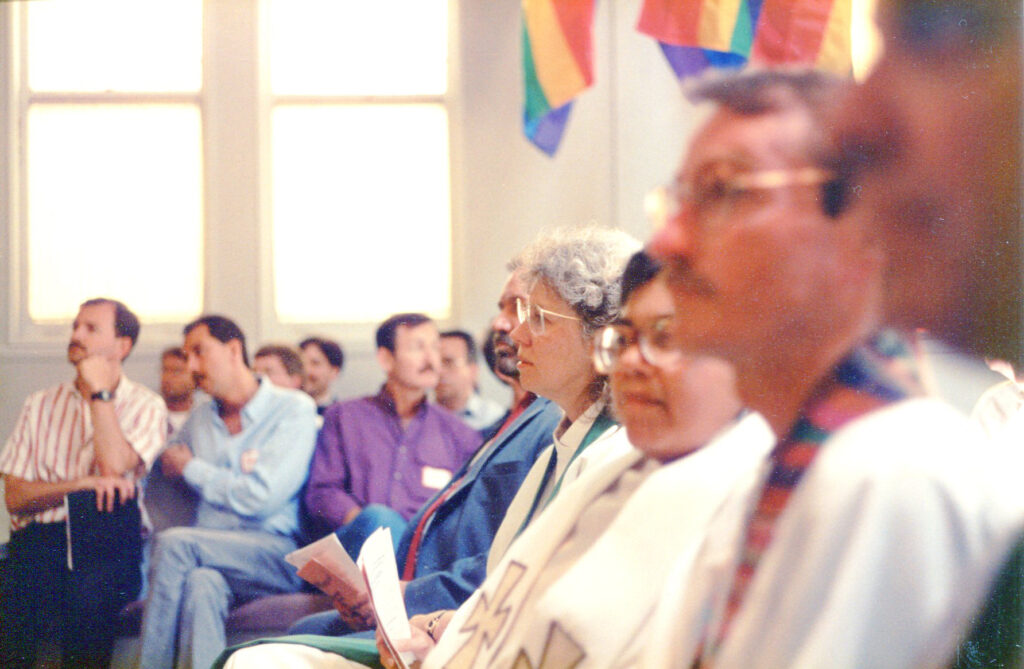Community Prayer

The congregation during a worship service, August 6, 1989. Photo by Audrey Lockwood. Courtesy of the Kittredge Cherry and Audrey Lockwood Collection.
During a communion service, murmurs of people praying together are audible beneath piano music. MCCSF Archive, July 26, 1992.
MCCSF worship services had many moments for prayer. The congregation prayed out loud, together and in unison. They also prayed individually in the pews, quietly and personally, but alongside the rest of the congregation. Sometimes they read from printed texts; sometimes the spirit moved and they prayed spontaneously. They prayed for specific friends in hospitals, and for the healing of their community and the world. Their closest relationships were raised in prayer, and listening to their prayers reveal what those relationships were. Hearing the ways people pray and the things they pray for gives us a sense of the concerns that the community grappled with and the kind of space a religious community can make for those concerns to be spoken and shared.
Rev. Jim Mitulski leads a time of prayer for congregants who are hospitalized, who have died, and who are grieving. MCCSF Archive, October 6, 1991.
16
Every MCCSF worship service had a time set aside for community prayer, when the floor was open for people to speak their thanks and their concerns. This allowed the community to learn of pressing issues and to pray for people in more specific ways. The following examples of community prayer reflect the deep concern many had about family – chosen, biological or in between. These prayers (recorded on October 11, 1992 and November 1, 1998, respectively) express gratitude for positive connection with families of origin who weren’t always accepting of homosexuality and concern for chosen family on whom congregants deeply relied.
Rev. Jim Mitulski consecrates communion and invites everyone to participate in the ritual of sharing the bread and the cup, while also inviting those in need of healing to ask for prayer and healing touch. MCCSF Archive, February 24, 1991.
Once a month MCCSF held a healing service. People who wanted hands-on healing prayer stood in the aisles and waited their turn to stand with someone from the prayer team who touched their head, arm or back and offered an extemporaneous prayer, often whispered in the recipient’s ear. Physical touch was immensely important to people with AIDS who experienced a great deal of social and physical isolation. And developing the spiritual skill of extemporaneous prayer was important to spiritual leaders in the congregation who sought meaningful ways of being present with people seeking healing.
These recordings of a healing service – where the spoken prayer is largely inaudible – gives the listener a sense of how prayer in different modalities combined in the congregation. In the first clip Rev. Jim Mitulski explains to the congregation, and to us, what praying for healing could look like. The second is a soundscape of prayers during a healing service that blur the public and the private, and the spoken and the silent, with the church pianist playing.